Exploring Scholastic Books of the 2000s: Trends & Impact


Intro
The 2000s marked a significant phase in the evolution of children's literature, especially in the realm of scholastic books. During this decade, various titles emerged that not only captivated young readers but also shaped educational practices and cultural conversations. This period saw a surge in diverse themes reflecting shifting societal values, as well as the evolution of characters that resonated with a new generation.
As we embark on this exploration of scholastic books from the 2000s, we will delve into the characters that grace these pages, the central themes that define the narratives, and the cultural references that enrich these stories. By analyzing these elements, we aim to provide a nuanced understanding of the impact and legacy these books carry into today's world.
Character Profiles
Overview of Main Characters
The main characters in seminal 2000s scholastic books often represented a diverse range of backgrounds and experiences. Titles like Harry Potter by J.K. Rowling not only introduced readers to the wizarding world but also highlighted the struggles of young heroes facing moral dilemmas. Harry, Hermione, and Ron embodied loyalty, bravery, and friendship, serving as archetypes for young readers navigating their own challenges.
Similarly, The Hunger Games series by Suzanne Collins presented a starkly different, yet equally impactful, protagonist in Katniss Everdeen. This character depicted a strong, resourceful young woman fighting against oppressive societal structures, reflecting themes of empowerment and resistance.
Supporting Characters
The supporting characters in these narratives played crucial roles in enriching the story arcs. In Harry Potter, figures such as Albus Dumbledore and Severus Snape added depth to the protagonist's journey, embodying complex themes of loyalty, sacrifice, and the shades of morality.
In The Hunger Games, Peeta Mellark served as a counterbalance to Katniss's fierce determination, showcasing the importance of compassion in a dystopian world. The nuanced portrayal of these supporting characters allowed readers to engage with the stories on multiple emotional levels.
Theme Exploration
Central Themes
Several themes emerged prominently in the scholastic books of the 2000s. Coming-of-age, the triumph of good over evil, and the exploration of moral ambiguity were recurrent motifs. Books like The Giver by Lois Lowry examined the complexities of a controlled society, inviting readers to question the nature of free will.
Additionally, elements of friendship and loyalty were paramount in many narratives. These themes not only entertained but also provided authentic reflections of the reader's own experiences and relationships.
Cultural References
Cultural references in these literary works serve to ground the stories in relatable contexts. For instance, Diary of a Wimpy Kid by Jeff Kinney offered a humorous take on middle school life, with its relatable scenarios of friendship, family issues, and the complexities of adolescence. The use of cultural touchpoints in school settings provided relevance that resonated with young audiences, making the themes more impactful.
Popular Titles and Recommendations
In showcasing the influence of 2000s scholastic books, it is essential to highlight some notable titles:
- Harry Potter Series by J.K. Rowling
- The Hunger Games Series by Suzanne Collins
- Percy Jackson & the Olympians by Rick Riordan
- Diary of a Wimpy Kid by Jeff Kinney
These works not only garnered critical acclaim but also fostered an engaged readership that continues to thrive.
In summary, the scholastic books of the 2000s contributed not merely to entertainment but to cultural and educational dialogues. Their characters, themes, and cultural contexts resonate to this day, shaping how literature is perceived in educational spaces and popular culture. Through these reflections, we recognize the foundations laid by these books and their ongoing legacy in nurturing young minds.
Prologue to Scholastic Books
The realm of Scholastic books serves as a significant pillar in children’s literature, particularly during the early 2000s. This period marked a transformation in how stories were told, focusing on themes and characters that resonated deeply with young readers. By exploring Scholastic’s contributions, we can understand the interplay of narratives with educational frameworks, cultural shifts, and the evolving preferences of youth. This section delineates the essence of Scholastic books and their enduring relevance.
Definition and Importance
Scholastic books refer to a wide array of educational and entertaining literature aimed primarily at children and young adults. This genre seeks to engage young minds while imparting vital lessons on various aspects of life. The importance of these books lies in their ability to cater to varying age levels and interests. For instance, from fantastical adventures like Harry Potter to realistic portrayals in Lemonade Mouth, each title offers unique insights and reflections relevant to the target audience.
Thus, these literary works not only entertain but educate, sparking critical thinking and imagination. They encourage children to explore different cultures, ideas, and moral lessons. The diversity in themes fosters acceptance and understanding among young readers, making Scholastic works a gateway to broader societal discussions.
The Role of Scholastic in Education
Scholastic’s role in education transcends mere publication. The company has positioned itself as a key player in fostering literacy and encouraging a reading culture among students. Through various programs, such as book fairs and classroom catalogs, Scholastic has made literature accessible, providing schools with resources that enhance curriculum. These initiatives create an environment where reading becomes a shared experience, promoting engagement in classrooms.
Moreover, Scholastic books often align with educational standards. They provide teachers with resources that are not only relevant but also exciting for students. Incorporating these stories into lesson plans can lead to productive discussions about diversity, ethics, and the complexities of growing up. In many ways, Scholastic has become a bridge between education and entertainment, reinforcing the idea that learning can be both enjoyable and profound.
Scholastic literature combines imaginative storytelling with educational significance, making it instrumental in developing critical readers.
In summary, the importance of Scholastic books lies in their dual capacity to delight and educate. They play an essential role in shaping young minds and supporting educational growth, making them a pivotal component in the landscape of children’s literature.
The 2000s Literary Landscape
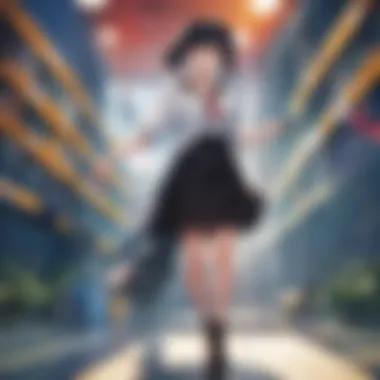
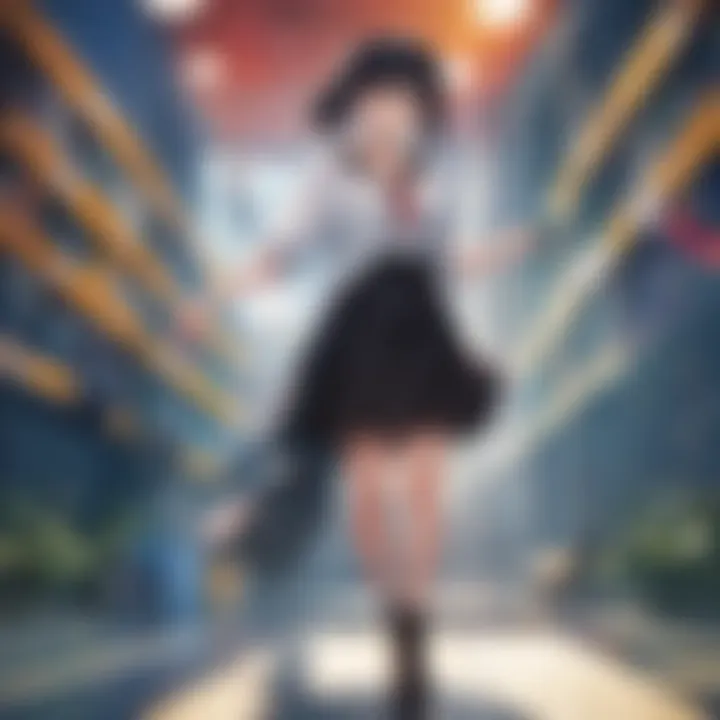
The 2000s represented a pivotal phase in children's literature, marked by significant transformations in themes and genres. Scholastic books during this era did not merely serve entertainment; they reflected societal changes, technological advances, and the evolving needs of young readers. These elements shaped not only the narratives but also the dynamics of reading culture. The importance of examining this literary landscape lies in understanding how these trends contributed to the education and development of children and adolescents.
Shifts in Themes and Genres
The early 2000s brought a distinct shift in themes and genres within children’s literature. Notably, there was a growing emphasis on diverse voices and perspectives. Books began to tackle complex issues such as identity, social justice, and environmental concerns. This era saw the emergence of fantasy as a dominant genre. The Harry Potter series by J.K. Rowling is a prime example, intertwining elements of magic with real-life adolescent struggles. Besides fantasy, other genres like historical fiction gained traction, allowing readers to engage with past events in relatable ways.
Moreover, the rise of graphic novels contributed significantly to the landscape. Titles such as Bone by Jeff Smith and Amulet by Kazu Kibuishi introduced younger audiences to compelling storytelling through visuals. This incorporation of different genres and formats helped broaden the appeal of reading, making literature more accessible and engaging for hesitant readers.
The increased interest in non-fiction works also marked this period. Books on science, history, and biographies catered to the inquisitive minds of young readers, creating a balance between entertainment and education.
Cultural Reflections in Literature
Children’s literature in the 2000s mirrored cultural shifts and challenges. Authors began to reflect societal issues through well-crafted narratives. For instance, the integration of multicultural characters and stories illustrated the rich tapestry of society and gave voice to underrepresented communities.
Works like Inside Out and Back Again by Thanhha Lai and The Absolutely True Diary of a Part-Time Indian by Sherman Alexie highlighted the experiences of children from various cultural backgrounds. These stories resonated with readers, promoting empathy and understanding amidst the complexities of modern life.
Additionally, the impact of technology on youth was prevalent in literature. As digital culture took root, themes surrounding the internet, video gaming, and social media began to surface. Novels like Cathy's Book by Jordan Weisman effectively blended traditional storytelling with interactive elements that appealed to tech-savvy readers.
In summary, the literary landscape of the 2000s stood as a reflection of evolving societal values and norms. Scholastic books not only entertained but also educated, providing insights into a rapidly changing world.
Noteworthy Authors and Their Contributions
The contributions of specific authors during the 2000s significantly shaped the landscape of Scholastic literature. Their creative works not only resonated with readers but also addressed complex themes relevant to youth. Authors like J.K. Rowling and Rick Riordan emerged as pivotal figures, elevating genre expectations and impacting educational frameworks. Exploring these authors provides insight into how individual voices can steer the trajectory of literature, offering diverse narratives that engage young minds.
J.K. Rowling and the Harry Potter Phenomenon
J.K. Rowling's impact on children's and young adult literature cannot be overstated. The Harry Potter series debuted in 1997 but resonated deeply throughout the 2000s, transforming reading habits among children and adults alike. The franchise's merging of fantasy with relatable themes like friendship, bravery, and the struggle against prejudice captured the imaginations of millions.
Throughout the series, Rowling introduced characters and narratives that challenged societal norms. The themes of love, sacrifice, and the fight against evil engaged readers in deeper discussions about morality. Additionally, Rowling's ability to create a rich, immersive world encouraged reluctant readers to embrace literature. The series also prompted schools to include it in curricula, illustrating its educational value.
Rick Riordan and Mythology Revitalization
Rick Riordan revitalized interest in mythology through his Percy Jackson & The Olympians series. Launched in 2005, this series introduced readers to Greek mythology in an accessible manner. Riordan's contemporary storytelling style provided humor and relatability, sparking a new wave of fascination with ancient tales.
His ability to blend the mythical with modern-day challenges resonated well with young audiences. Characters like Percy Jackson are often depicted as outsiders, emphasizing themes of identity and belonging. This approach encouraged readers to explore their own identities while appreciating the complexities of mythological narratives. The influence of Riordan extended beyond literature, leading to educational programs that integrated mythology into classroom discussions.
Other Influential Authors
In addition to Rowling and Riordan, several other authors made notable contributions during the 2000s.
- Cassandra Clare, known for her The Mortal Instruments series, engaged readers with urban fantasy that intertwined magical elements with contemporary settings.
- Cornelia Funke, author of Inkheart, expanded the literary imagination by exploring the concept of books as gateways to other worlds.
- Sharon Creech, with her title Walk Two Moons, offered poignant reflections on family and personal growth.
These authors, each bringing unique perspectives, played a vital role in shaping what children's literature could be in the new millennium. Their narratives not only entertained but also allowed young readers to confront real-life issues within fictional contexts. In sum, the contributions of these notable authors forged connections between literature and the realities faced by their audiences.
Popular Series and Standalone Titles
In the realm of children's literature during the 2000s, popular series and standalone titles formed a significant part of reading culture. This segment explores how these types of books not only captured the imagination of young readers but also served educational purposes. The appeal of series lies in their ability to create attachment and engagement over time, while standalone titles often challenge readers with new ideas or perspectives in a single narrative.
The Impact of Series
Series such as Harry Potter by J.K. Rowling and Percy Jackson by Rick Riordan showcased the profound effect that a well-crafted continuation of stories can have on readers. A significant advantage of series literature is its tendency to develop complex characters and deepen their stories. Readers invest emotionally in characters over multiple books, leading to a strong bond that may not be achieved through standalone titles.
Another factor is the fostering of habits among young readers. When a series captures a child's interest, it encourages the desire to read subsequent books. This might lead them to explore other literary works or genres, broadening their reading skills. Popular series of the 2000s also introduced diverse themes, often tackling real-world issues like friendship, loyalty, and identity, all wrapped in engaging narratives.
"Series books create a familiarity that can make readers feel more comfortable exploring literature, helping them grow as individuals."
Standalone Titles that Made a Difference
In contrast, standalone titles in the 2000s provided readers with unique experiences unbound by multiple sequels. Works like Holes by Louis Sachar and The Giver by Lois Lowry are notable examples that left a lasting impact. These books stand out due to their ability to convey deep messages succinctly and thoughtfully.
Standalone novels often target specific themes or moral dilemmas, challenging readers to reflect on societal issues or their own lives. Books like Wonder by R.J. Palacio deal directly with topics of acceptance and kindness, encouraging empathy among readers. Such narratives are beneficial, as they can prompt discussions about complex subjects within educational settings.
In summary, both series and standalone titles contributed significantly to the 2000s landscape of children's literature. Series nurtured attachment and enhanced reading habits, while standalone works offered concise, impactful messages. Both types of literature deserve recognition for their roles in shaping readers' experiences and promoting literacy.
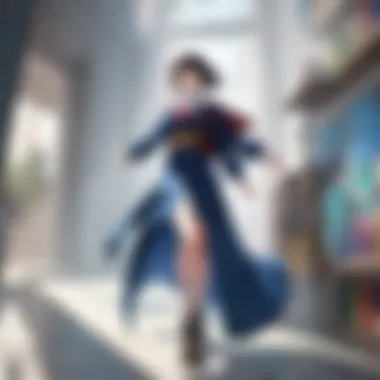
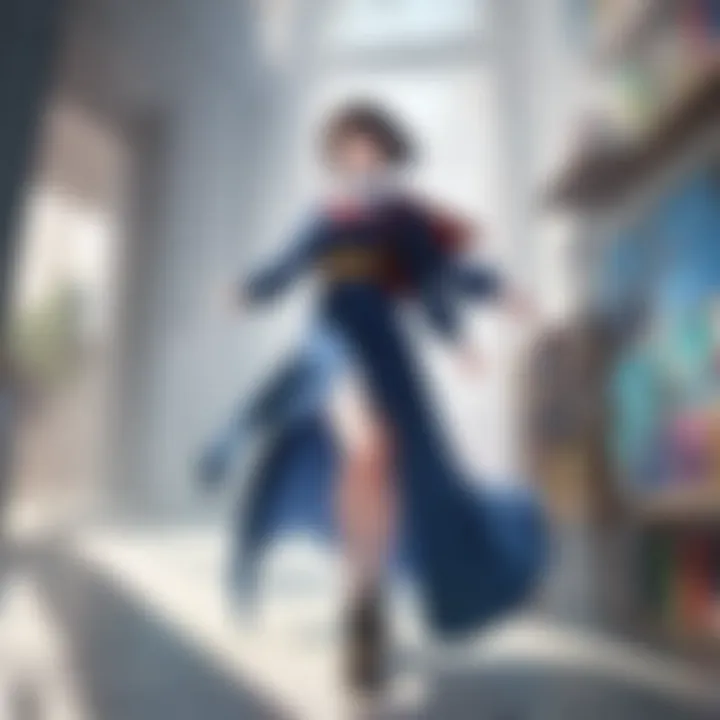
Themes in 2000s Scholastic Literature
The themes present in 2000s Scholastic literature are vital in understanding the narratives and messages directed toward young readers. During this decade, various elements resonated with audiences, revealing the changing nature of children's literature. This exploration not only enhances comprehension of the literature but also reflects broader societal changes.
Identity and Self-Discovery
The journey of identity and self-discovery stands as a central theme in 2000s Scholastic books. Many characters navigate the complexities of adolescence, grappling with self-image and personal beliefs. This theme encourages readers to engage in introspection as they see characters evolve. Books like "Harry Potter" and "The Perks of Being a Wallflower" articulate these struggles, presenting moments of clarity that resonate deeply with young audiences.
The exploration of identity often intersects with cultural awareness, prompting discussions about race, gender, and sexuality. This theme fosters a safe space for youth to question their own identities while offering diverse perspectives. Such narratives can lead to empathy and understanding, which are crucial in shaping informed individuals.
Friendship and Loyalty
Friendship and loyalty are significant threads woven into the literature of this period. Tales often center around groups of friends who face challenges together. The dynamics of these relationships manifest in stories like "Percy Jackson and the Olympians," where loyalty is tested in the face of adversity. These books don’t just focus on friendships; they delve into loyalty's nuances, the conflicts that arise, and the importance of standing together. Such representations give readers a sense of belonging, reminding them that supportive relationships are foundational during formative years. Furthermore, these loyal friendships can empower young readers to value their personal connections, learning to navigate their own friendships with care and sincerity.
Conflict and Resolution
Conflict and resolution are essential elements in storytelling, particularly in literature aimed at youth. In many 2000s Scholastic novels, conflicts arise from both internal struggles and external pressures. Titles like "Holes" and "The Giver" offer engaging plots where characters confront obstacles that can seem insurmountable. The resolution of these conflicts often teaches valuable lessons about perseverance and problem-solving. By presenting characters who face challenges head-on, these books not only engage young readers but also provide models of resilience. Understanding how characters resolve conflicts can inspire readers to approach their own dilemmas with similar determination.
These key themes—identity and self-discovery, friendship and loyalty, as well as conflict and resolution—intertwine to create a rich tapestry of narratives that engage young readers while offering critical lessons for real-life scenarios.
Overall, the themes in 2000s Scholastic literature play a significant role in shaping young minds. They encourage valuable life lessons, promote self-reflection, and foster connections among peers.
Cultural Implications and Reception
The cultural implications and reception of Scholastic books from the 2000s reveal much about the broader narratives that shaped young readers. These literary works not only entertained but also provided insights into societal changes, identity, and moral values. Literature has always reflected the culture of its time; in the 2000s particularly, it mirrored the rapid technological advancements and shifts in social dynamics. This period saw an emergence of diverse voices, which began to reshape the landscape of children's and young adult literature.
Reception Among Young Readers
The reception of these books among young readers plays a crucial role in understanding their impact. Children and teenagers were more than just passive consumers of content; they actively engaged with the stories and characters. They formed emotional connections, often viewing protagonists as mirrors of their own experiences. Series such as J.K. Rowling's Harry Potter offered themes of friendship, bravery, and the fight against adversity.
These narratives became cultural touchstones for many. Rick Riordan's series revitalized interest in mythology, appealing to young readers' innate curiosity for adventure and discovery. The shared experiences surrounding these books fostered a sense of community among peers, both in school and among fandoms online. The presence of forums on platforms like reddit.com allowed readers to discuss themes and plot twists, enriching their understanding.
Impact on Educational Curricula
Moreover, the impact of these books on educational curricula cannot be overstated. Teachers began to incorporate popular series into lesson plans to encourage reading engagement. When students see the characters they love being part of discussions or reading assignments, it can spark a deeper interest in literature. Works like The Hunger Games by Suzanne Collins not only provided thrilling plots but also opened dialogue on complex themes such as ethics, government, and personal sacrifice.
The inclusion of diverse literary voices began to emerge during this time, prompting reflections on race, gender, and identity in educational settings. As a result, teachers had more tools available to address these significant topics. The approach towards promoting reading shifted from mere curriculum requirements to fostering passionate, informed readers. In this dialogue between young readers and literature, a new generation emerged, increasingly aware of the world around them.
By integrating culturally relevant literature into curricula, educators provided students with both the tools to understand their world and the desire to engage with it critically.
In summary, the cultural implications and reception of Scholastic books from the 2000s significantly influenced young readers and educational practices. These books fostered emotional connections, encouraged dialogues about essential themes, and reshaped how reading was perceived in educational contexts.
Illustrations and Aesthetic Elements
The realm of children's literature heavily relies on illustrations and aesthetic components to create immersive experiences. In the 2000s, the way illustrations were used within Scholastic books not only enhanced the storytelling but also played a crucial role in engaging young readers. The visual elements act as companions to the text, offering context and depth that might otherwise be missed.
Illustrations can serve multiple purposes. They help convey complex emotions, set the tone of a story, and aid in comprehension for children who may struggle with text. Moreover, they provide a sense of wonder and curiosity that invites readers to interact with the pages. In an age where screens often dominate entertainment, these tactile visual experiences can draw children away from digital distractions and back into the pages of a book.
The Role of Illustrations in Engagement
Illustrations serve as a bridge between childhood imagination and narrative structure in literature. Engaging illustrations can capture children’s attention and stimulate their imagination. For instance, in books like Diary of a Wimpy Kid by Jeff Kinney, the cartoonish drawings resonate well with the target audience, making the experience relatable and enjoyable. This visual humor complements the written word and encourages readers to visualize scenarios in their minds.
Furthermore, illustrations can help children articulate their thoughts and feelings about the story. When they see characters and settings visually depicted, they are more likely to connect emotionally with the material. The vibrant colors and animated designs evoke feelings and reactions that plain text might not easily achieve.
Art Styles and Trends
The art styles used in Scholastic books during the 2000s reflected broader trends in both children’s publishing and popular culture. The aesthetic embraced various influences, from graphic novels to anime, effectively appealing to a diverse audience.
Illustrative styles like cartooning became popular during this decade. Books like Captain Underpants by Dav Pilkey employed a simple yet effective visual approach that appealed to reluctant readers. In contrast, titles such as The Mysterious Benedict Society by Trenton Lee Stewart utilized more detailed illustrations that complement a more sophisticated narrative.
In addition, the influence of manga has become visible in some works, inspiring illustrations that emphasize expressive characters and dynamic compositions. This adaptation indicates a shift in the type of visual storytelling admired by younger audiences, highlighting their exposure to various global cultures through media.
As technology advanced, so too did the methods of creating illustrations. Digital art emerged as a common tool for artists, providing greater flexibility and creativity in design. The resulting illustrations in Scholastic books from this era stood out for their clarity and vividness, attracting readers and making the reading experience more memorable and engaging.
"Illustrations are not just art; they are an essential part of storytelling for young readers. They unlock the door to imagination and help shape thoughts and discussions about the narrative."
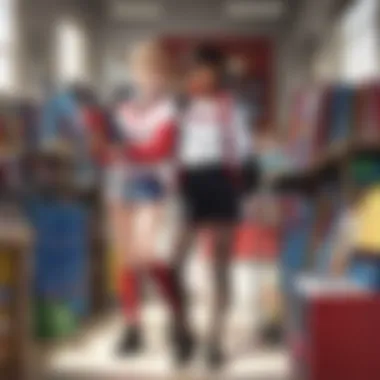
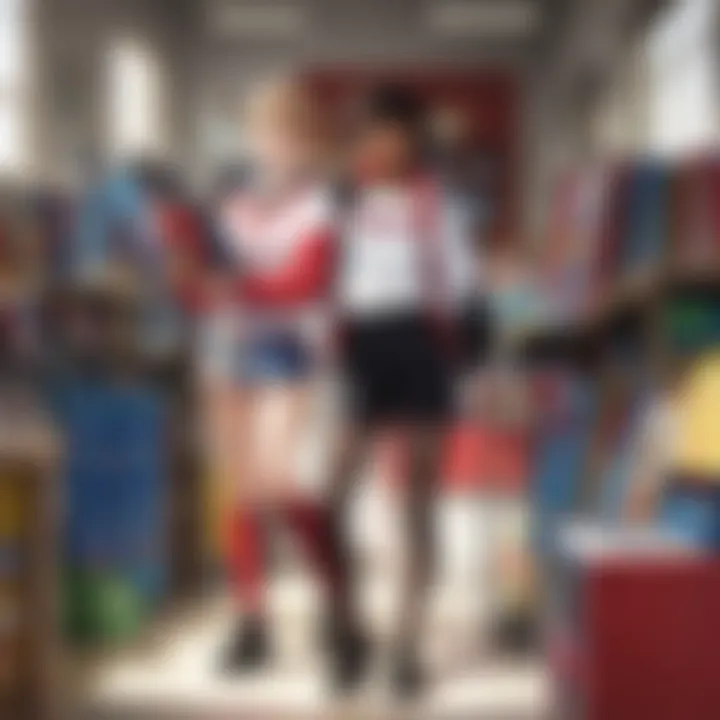
In summary, the exploration of illustrations and aesthetic elements within Scholastic books from the 2000s reveals their vital role in engaging young readers and shaping literary experiences. The evolution of illustration styles further illustrates a period of creativity and experimentation, reflecting both cultural shifts and advancements in artistic techniques.
Adaptations and Multimodal Expressions
Adaptations of literary works into various media are a significant aspect of the impact of Scholastic books from the 2000s. This interaction between books and other forms of expression, such as film and television, enhances the original narratives and offers new audiences insights into the source material. Understanding this dynamic can help in appreciating the broader cultural resonance of these stories.
From Page to Screen
Adapting popular books into films has proven to be a lucrative endeavor for the publishing industry. The transition of stories from page to screen captures the imagination of both children and adults, bringing beloved characters to life. For instance, the cinematic adaptations of the "Harry Potter" series by J.K. Rowling not only elevated the book's status but also expanded its reach globally.
The process involves intricate collaboration between authors, screenwriters, and directors. Each adaptation entails decisions that can alter plotlines, character arcs, and thematic emphasis. Some adaptations remain loyal to the original material, while others may introduce new elements that facilitate the transition to a different medium.
Consider the animated series based on Rick Riordan's "Percy Jackson" series, where aspects of the mythology are brought to life using advanced CGI technology. Such adaptations serve to engage younger audiences who may not read extensively. The synergy between books and films fosters a multi-layered storytelling experience that can deepen audience engagement.
Influence on Television and Film
The influence of Scholastic books on television and film spans far beyond mere adaptations. Many literary works have served as a foundation for original programming that evokes similar themes and messages, tapping into the rich content available in children's literature.
For example, shows like "The Magic School Bus Rides Again" derive inspiration from books that teach scientific concepts through imaginative storytelling. These programs extend the educational value of their source material, making learning entertaining and accessible to a wider demographic.
Moreover, adaptations often rejuvenate interest in the books. When a series is successful on screen, book sales typically witness a significant uptick. This cycle reinforces the essential role that media adaptation plays in sustaining the relevance of literary contributions.
In sum, looking at the adaptations and their effect on Scholastic literature highlights the multi-faceted relationships among text, visual media, and audience Reception. These adaptations contribute not only to the popularity of titles but also enable richer discussions about themes and narratives that resonate with younger audiences.
"The marriage of books to multimedia platforms has transformed how young readers engage with literature, making stories more accessible and relatable."
Combining texts with different expressions nurtures a deeper understanding of both mediums. Scholastic books from the 2000s set the stage for future ventures, encouraging a thriving dialogue between reading and viewing.
As these adaptations continue to unfold, one can anticipate an evolving landscape where literature and visual artistry converge, often reshaping our perceptions of storytelling.
The Evolution of Scholastic Publishing
The evolution of Scholastic publishing in the 2000s represents a significant shift in how children's literature was created, disseminated, and consumed. This era marked a transformative period, driven by advancements in technology and changes in reader expectations. Scholastic Books adapted to these changes, evolving its strategies to remain relevant in a fast-paced market. The complexity of this evolution lies in understanding how technological changes influenced both the content and the medium of literature offered to young readers.
In the 2000s, digital technology emerged as a powerful force in the publishing industry. Scholastic began to explore how to reach children not just through traditional print books but also through online platforms and interactive media. E-books started to gain popularity, prompting major publishers to invest in formats that connect with modern audiences. These shifts allowed for greater accessibility and engagement with literature among children and adolescents who were increasingly surrounded by digital devices.
Moreover, the rise of the internet fostered new methods for marketing and distribution. Scholastic's website, along with social media platforms, offered unprecedented opportunities to directly connect with young readers. This direct engagement cultivated a community around reading, fostering a sense of belonging while amplifying the voices of both established and emerging authors. Thus, the role of online marketing in fashioning a lasting relationship between literature and its audience cannot be overstated.
Technological Advances and Their Effects
Technological advances during this period had profound effects on scholastic publishing. The integration of digital resources allowed for a more dynamic storytelling experience. Interactive books, which included animations and sound effects, captured the interest of a younger audience that sought more than just printed text. This engagement offered a move away from passive reading to an interactive experience, fueling interest in literacy and encouraging children to explore stories actively.
Additionally, the growth of e-readers like the Kindle from Amazon made reading more convenient. The ease of access enabled children to carry multiple titles in one lightweight device, changing reading habits. Families found it easier to encourage reading when the effort required was minimal. This shift contributed to an increase in overall book consumption among children, impacting literature sales positively.
Emerging Trends in Children's Literature
As the decade progressed, certain trends began to emerge within children's literature that reflect broader cultural changes. One significant trend was the rise of diverse voices in literature. Authors from various backgrounds started to tell stories that reflected different ethnicities, cultures, and social issues. Books such as Inside Out and Back Again by Thanhha Lai and The Crossover by Kwame Alexander exemplified this shift, providing representation for underrepresented groups in literature.
Another notable trend involved the integration of multimodal storytelling. Books that combined visual art, poetry, and narrative broke traditional storytelling molds. This innovation resonated with young readers who were accustomed to consuming information in diverse formats. Scholastic published titles that experimented with narrative structure, encouraging children to engage with texts in new ways.
Finale: Legacy of 2000s Scholastic Literature
The legacy of 2000s Scholastic literature is vast and intricate. This period saw a dramatic evolution in how children's literature was both produced and received. The impact of the books published during this time transcends mere entertainment; they have reshaped the landscape of young adult literature, influencing writers and educators alike. Understanding this legacy helps us appreciate not only the stories themselves but also the cultural shifts they prompted in society.
Scholastic’s role during this decade cannot be overstated. As a leader in publishing, it cultivated a generation of readers who found voice and identity through diverse narratives. Issues of identity, self-discovery, and friendship resonated deeply with children and young adults and continue to do so today. It opened conversations about belonging, acceptance, and the complexities of growing up. These themes contributed to a broader cultural awareness surrounding young people's experiences.
Enduring Impact on Future Generations
The influence of Scholastic books from the 2000s will continue to echo through future generations. Children exposed to series like Harry Potter or Rick Riordan’s Mythology works often become lifelong readers. These narratives sparked interest in reading as a form of exploration and education. Moreover, when children find characters who resemble them, they develop critical empathy and understanding of various perspectives within society. In an increasingly interconnected world, this foundational skill proves essential.
Educational systems have adopted many of these titles into their curricula, affirming their significance. Books that focus on real-life issues empower students to discuss and navigate the complexities around them. This legacy shapes how future authors tackle similar themes, ensuring that literature evolves but retains its core relevance.
Final Reflections on Scholastic Books
Reflecting on the contributions of 2000s Scholastic literature reveals much about our current society. These books did not merely provide escapism. Instead, they served as mirrors, reflecting social issues and values that needed addressing. Bibliophiles and students alike owe a debt of gratitude to the dazzling array of characters, plots, and environments crafted by authors during this era.
While trends in literature evolve, the importance of authentic representation remains. The works published by Scholastic sparked discussions that challenge stereotypes and encourage inclusivity. They instilled a leadership role in educating young readers about their world, broadening their horizons, and fostering an environment of diversity and understanding.
Ultimately, the legacy of 2000s Scholastic literature underscores its pivotal role in shaping readers who think critically about their surroundings and their place in them. As we look ahead, we must remember this legacy, allowing it to guide future literary creations and educational practices.







